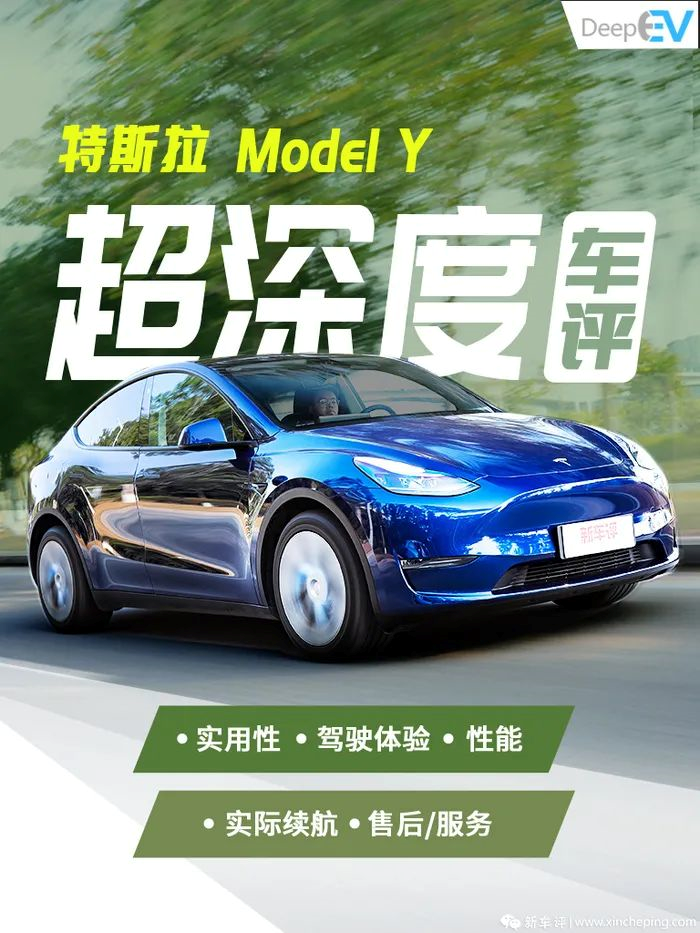Practicality
The Tesla Model Y is definitely the first hot-selling product in the 2021 Chinese automotive market. With the personal charm of its CEO Elon Musk and the super strong appeal of the Tesla brand, it has attracted a lot of attention since its release on New Year’s Day. However, the greater the traffic, the higher the attention, and the individual strengths and weaknesses of the product itself will be infinitely magnified. Consumers/internet users’ understanding of it may be one-sided, subjective, or even biased.
In order to provide you with the most effective reference for your purchase and a more comprehensive understanding of this popular product, we will provide you with a super in-depth car review. We will delve into the most concerning questions about this car and provide you with the most authentic information about the Tesla Model Y.
The appearance of the Tesla Model Y can basically be seen as a high-stretched Model 3, and the overall proportion of the car is almost the same as that of the Model 3. In fact, 75% of the parts on the Model Y are shared with the Model 3, which greatly reduces production costs and is in line with Tesla’s philosophy. Moreover, the sleek back design of the Model 3, when stretched up, just becomes the currently very popular coupe SUV style, which can be described as killing two birds with one stone.
The biggest highlight of the Model Y’s engineering design is the rear half of the body, where Tesla innovatively uses a large piece of integrally stamped parts. This design can greatly shorten the manufacturing time and cost, but it also brings certain pressure to the subsequent maintenance. Specific pros and cons may need to be determined after enough sample data is available.
The wheel hub is the style of the imported Model 3 performance version (Model 3 performance version has a new design), and the tires use the WanTuShi S1 EVO³ EV tire specially developed for electric vehicles by Hankook. The standard tire size is 255/45 R19.The Model Y, like the redesigned Model 3, features double-layered laminated glass in the front row and privacy glass in the rear windows. Additionally, the rearview mirrors of the Model Y incorporate an anti-glare design.
The interior of the Model Y retains the familiar Tesla style, with a minimalist design and a T-shaped center console. The entire car’s nearly all interaction tasks are taken care of by a large, high-definition screen in the middle. Like the redesigned Model 3, the Model Y has made adjustments to many details for overseas versions, extending the use of wooden decorative panels to the door panels and creating a more homey atmosphere.
Underneath the center screen of the Model Y are two wireless charging pads for mobile phones. The grooves are deeper and made of suede material, which not only holds the phone in place better but also looks better than the rubber used on overseas versions. The cover of the storage space below is now a sliding type.
The roof structure of the Model Y is slightly different from that of the Model 3, with a full glass roof that provides a clear view similar to the first-generation Touareg. However, there is no sunshade.
The Model Y has a higher body than the Model 3, and as such, the seats have been raised to compensate. However, the method of increasing the height is crude and simple, just adding two raised modules. Although the posture is relatively more comfortable, it creates a safety hazard in that items in the back seat are easily rolled forward and can easily get stuck under the brake pedal.
In terms of seating space, the Model Y is similar in absolute space to the Model 3, but the Model Y’s height provides ample headroom. The rear seats are shorter than those of the Model 3, but the higher seating position and the adjustable backrest angle make the Model Y much more comfortable for long journeys. (Tester height: 182cm)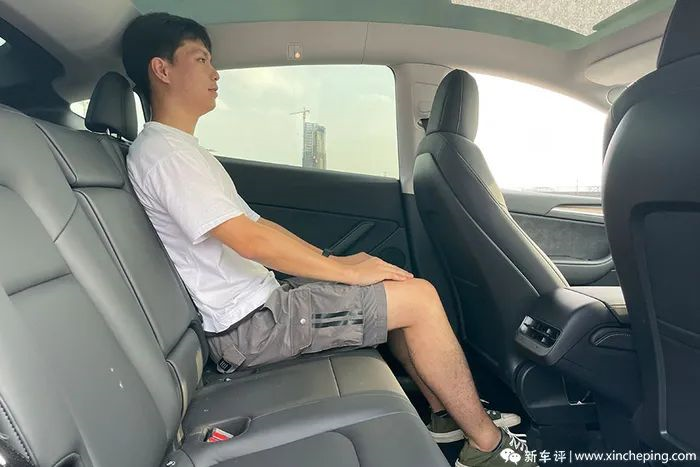
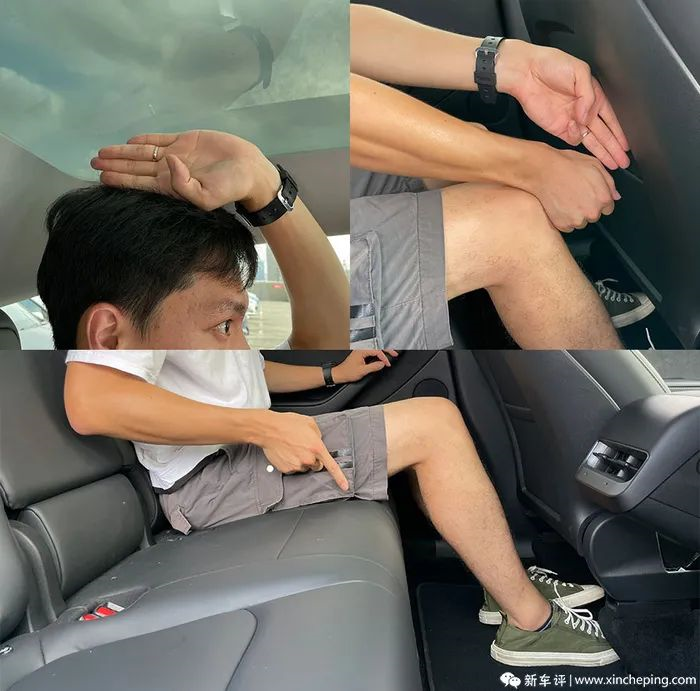
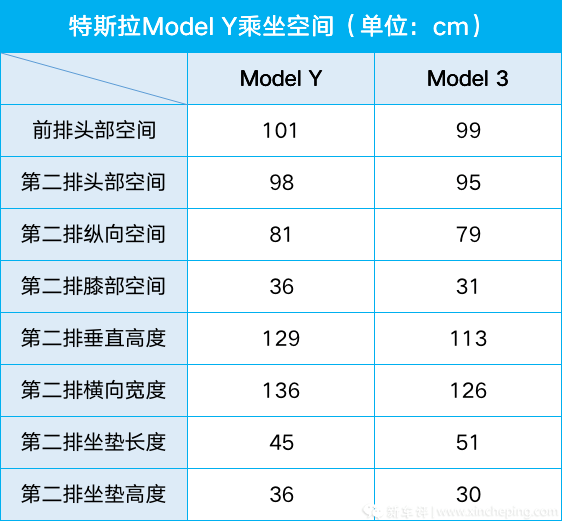
In terms of storage space, although the data alone does not show much advantage of Model Y compared to Model 3, the hatchback tailgate, coupled with higher and wider luggage compartment space, makes Model Y’s storage capacity much stronger than Model 3’s. At the same time, the hidden storage compartment at the bottom of the luggage compartment is also one more than that of Model 3, providing more places to hide private money. Speaking of hidden storage space, this is also Tesla’s traditional skill. After all, both the front trunk and the storage compartment at the bottom of the luggage compartment can easily accommodate a 20-inch luggage.
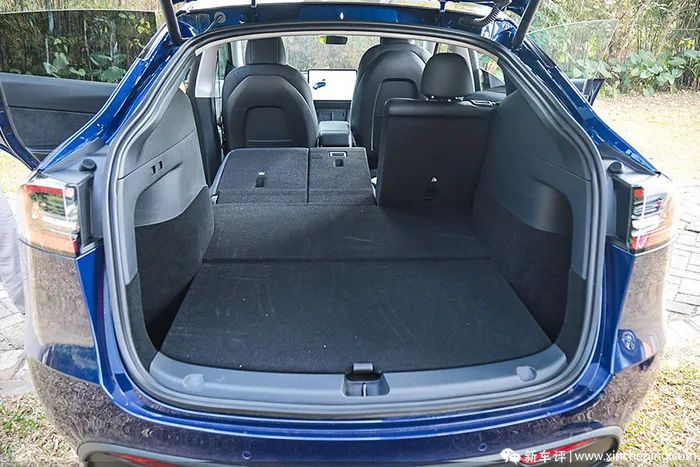
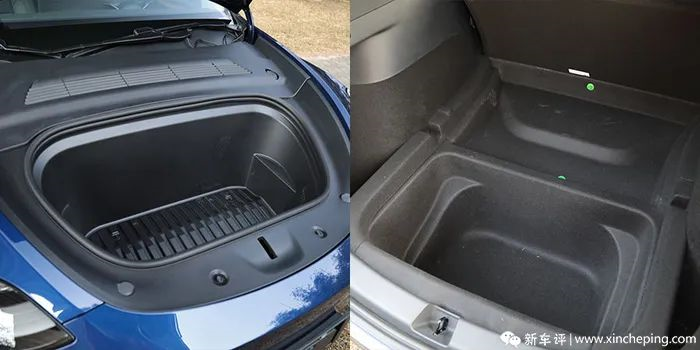

The most anticipated feature of Model Y is undoubtedly the addition of a heat pump air conditioner. When heating above -10°C, it can greatly reduce energy consumption. However, I don’t know if the air outlet design has been adjusted, but several cars we test drove all had buzzing noises. Hopefully, Tesla can improve it in the future.
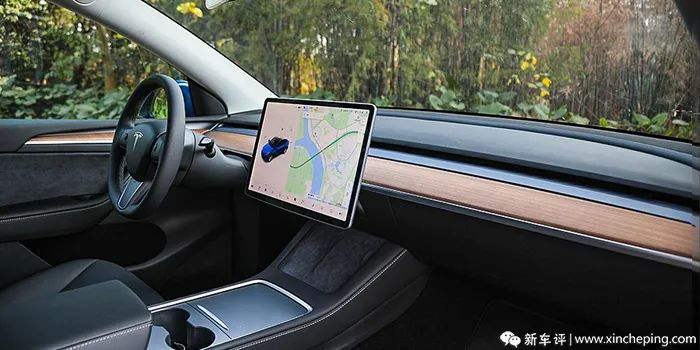
Will it be obsolete easily?
In terms of hardware, Model Y is equipped with Tesla MCU2 (the second-generation vehicle computer), with the central processor being Intel Atom A3950, a clock speed of 1.6GHz, 4G DDR4 memory, and a 15-inch full-fit IPS screen with a resolution of 1920×1200. Just from these parameters, it is already a pretty good configured tablet computer. Therefore, there is no need to worry about it becoming obsolete easily. I believe it can serve car owners well throughout its lifecycle.
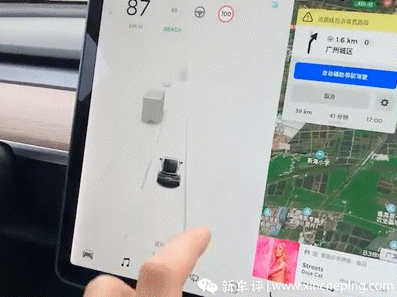 In terms of car software, Tesla has a logic that is completely different from other manufacturers. First of all, whether it’s the Model Y or 3, there is no traditional dashboard. Instead, driving-related information such as speed, gear, and the vehicle’s surrounding environment is displayed on the left side of the large screen. Through multiple OTA updates, the icon display in this area has become more reasonable, greatly improving the readability of the information.
In terms of car software, Tesla has a logic that is completely different from other manufacturers. First of all, whether it’s the Model Y or 3, there is no traditional dashboard. Instead, driving-related information such as speed, gear, and the vehicle’s surrounding environment is displayed on the left side of the large screen. Through multiple OTA updates, the icon display in this area has become more reasonable, greatly improving the readability of the information.
When the vehicle is stopped, a 3D view at a 45-degree angle is displayed. It’s not static either – when you open the door, window, trunk, or even turn the steering wheel, the vehicle on the screen responds dynamically, giving a feeling similar to a simulation game. However, there’s a bug with this little car view. The right rear door is blocked, so if it’s not closed properly, it won’t be visible on the screen. Although some netizens still criticize the design without a dashboard, saying that it will affect driving safety, I believe that you will prefer this open central console view after using this large screen.
The right side of the screen shows the Baidu map homepage, which can display current road conditions through the 4G network. The previous map software was criticized as being not user-friendly, but after OTA upgrades, the current navigation effect is similar to that of a phone, with lane reminders and enlarged displays at complex intersections. As for multimedia music, the Model Y cancels FM radio, so if you want to listen to broadcasts, you need to use the network. The advantage is that the sound quality is excellent. The music software supports QQ Music and Himalaya. Users can log in to their accounts to synchronize their preferences, which is similar to a phone and has no difficulty in using. Plus, in the latest OTA upgrade, QQ music has added a lyrics display function, although it seems insignificant.
In the regular vehicle settings menu, we see a logic similar to the iPad’s settings interface, with intuitive operation. However, it takes some time to adapt: whether it’s the Model Y or 3, adjusting the steering wheel and exterior mirrors must be done through the screen. After selecting them, you can adjust them using the scroll wheel on the left side of the steering wheel. The experience is quite unique, but not very convenient. Therefore, if you often change drivers, remember to save your settings in the driver menu.One of the most anticipated features after each OTA update for Tesla, besides the common in-car functions, is the new games and entertainment features. In recent updates, users can now set different horn sounds, including engine roars or fart sounds. While parked, users can play many mini-games and watch videos on platforms like Bilibili, Youku, and even TikTok. It’s also worth noting that the previously criticized voice recognition feature has been upgraded in the latest version, allowing users to control functions like wipers and the front trunk with voice commands. It’s believed that Tesla’s future OTA updates will bring even more exciting new features.
However, it’s important to emphasize that on the Model Y and the new Model 3, the adjustable regenerative braking feature has been removed, forcing consumers to use the single-pedal mode. This is not very consumer-friendly for those transitioning from fossil fuel cars.
Driver Assistance Hardware
Like the Model 3, Tesla Model Y’s sensors include eight cameras that provide 360-degree coverage with a maximum effective visual radius of up to 250 meters. In addition, there are 12 ultrasound sensors and one forward-facing millimeter-wave radar. These sensors work together and complement each other, bringing out the best in each other. Interestingly, Musk himself is very against lidar and has stated that Tesla will never use it for their vehicles. For even more cutting-edge technology, Tesla also plans to remove ultrasound sensors and use full vision for environmental perception to surpass the current autonomous driving capability.
The Model Y uses the same HW3.0 hardware as the Model 3, and the FSD automatic driving chip was released in April 2019. It has been hailed by Musk himself as “the world’s best chip”. In addition to the conventional CPU and GPU, the chip is equipped with two neural network processors (NNP), with a computing power of 144TOPS and a power consumption of 72 W. Even to this day, the FSD chip is still the best-performing chip in mass-produced cars.
Driver Assistance Experience
Two years ago, Tesla was definitely the leading brand in terms of autonomous driving experience, with sufficiently redundant hardware and reasonably complete software.Starting AP/NOA is quite simple, just flick the gear shift lever downwards twice while driving. The car will drive at the speed limit of the current road section, and if it detects lane lines, the vehicle will stay in the center of the lane. The steering wheel will real-time correct the path of the vehicle to follow the lane, and if you try to operate the steering wheel at this point, you will find that you need to use a lot of force to turn it. However, if you manually intervene, the lane keeping function will immediately stop working, while the adaptive cruise control function will continue to work. It’s somewhat confusing that whether you manually intervene or change lanes by turning on the turn signal, the system won’t automatically regain the lane keeping function after completing the maneuver. If you want to restore it, you can only activate it again by flicking the gear shift paddles, which is not friendly to drivers encountering slow-moving vehicles while driving or who like to overtake.
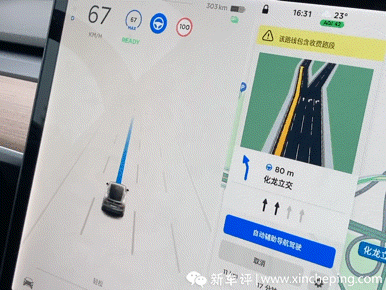
Tesla’s autonomous driving system is very “dominant” in subjective experience. Specifically, the vehicle has high control authority, and users need to exert considerable force to “regain” control of the steering wheel when intervening in the steering. Meanwhile, the AP can easily handle large-radius turns, ramp merges, and even complex autonomous driving scenarios when the system is functioning normally. After all, Tesla’s autonomous driving assist functions rely heavily on visual perception and are gradually upgrading their recognition capabilities through OTA upgrades. For example, early versions of Tesla could only identify vehicles, pedestrians, motorcycles, and lane lines. Later versions upgraded to identifying cones and traffic lights, and even garbage cans. As the computer learns more and more information, it is upgraded through OTA upgrades to help the executing mechanism become more perfect.
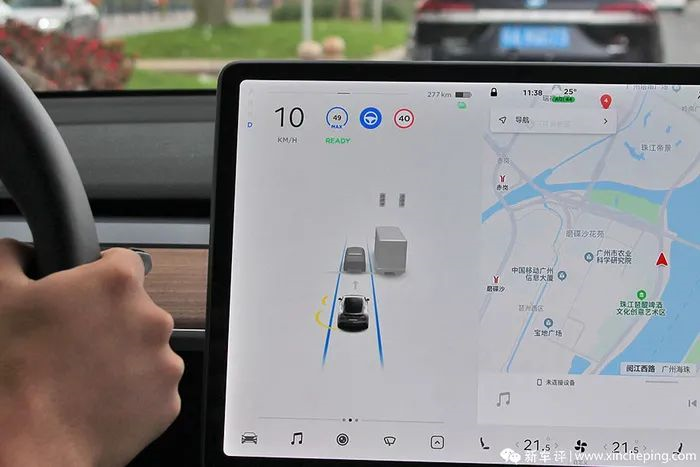
Currently, like all Teslas, the Model Y can achieve NOA navigation and autonomous guidance. In current production models, the XPeng P7, NIO, and updated Ideal ONE can also achieve the same functionality, thanks to their targeted research on road conditions in China, they may even have better autonomous driving experiences.
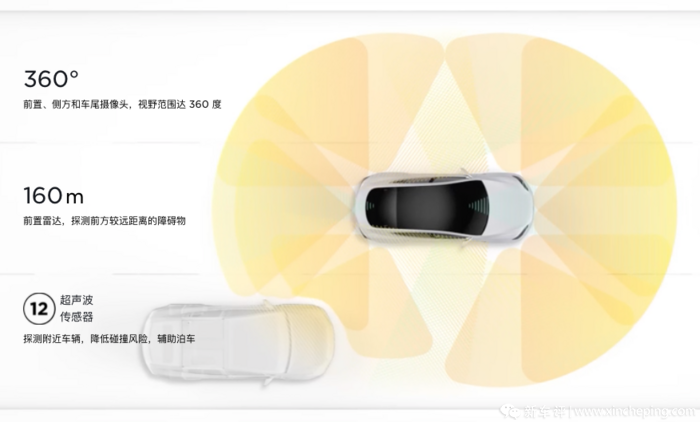
Of course, high reliance on visual perception inevitably leads to some shortcomings. For example, in harsh weather or when the camera is dirty, the autonomous driving assist function will be limited, and the accuracy of visual recognition will fluctuate greatly depending on the environment. However, many domestic manufacturers are about to launch lidar solutions that can more accurately perceive the three-dimensional information of the surrounding environment and detect from a greater distance, which may provide even more advantages in perception.### How is it to drive?
To be honest, interior sound insulation has never been Tesla’s strong suit, and the Model Y is no exception. Body resonance and tire noise are the main sources of noise. Compared to the Model 3, the Y obviously has a larger body structure, just like the sedan and wagon versions of many European cars, and the wagon body structure often produces certain body resonance. This experience is even more obvious in the Model Y, especially when driving on poorly paved roads. The “boom” of low-frequency noise will have a certain impact on the comfort of passengers in the car, and opening the windows while driving will alleviate it to some extent.
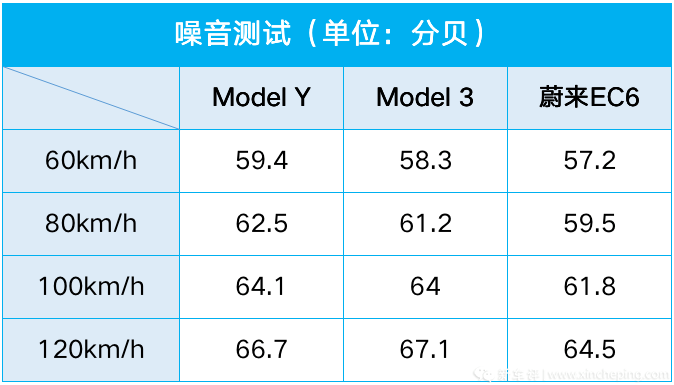
When it comes to the driving experience, many people believe that the Model Y is just a higher version of the Model 3, and the feeling of driving is not much different except for the better sitting posture and view. Is this really the case? In fact, the Model Y and 3 are very similar in terms of power output, after all, they have the same power system, and the throttle and brake systems are also the same. But due to the larger size and weight of the Model Y, the acceleration experience of Y is not as fierce as that of Model 3. However, in terms of absolute power, the Model Y is already very outstanding among household cars.
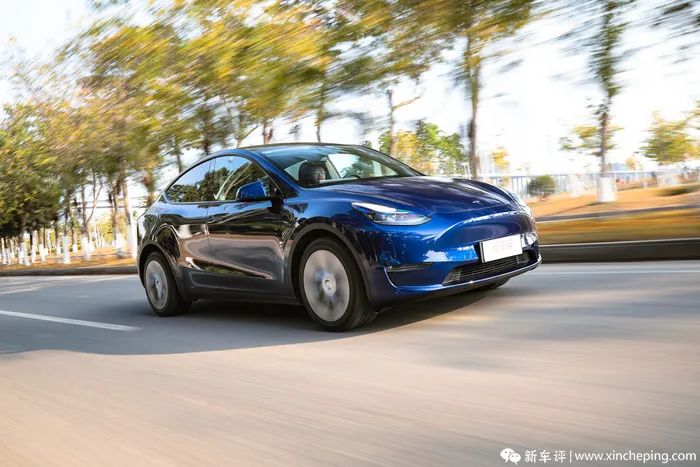
In terms of steering settings, the Model Y and 3 also have the same small steering ratio. Combined with the small size of the steering wheel, the responsiveness of the front of the car is much faster than that of SUVs in the same class. However, due to the larger size and weight, the body dynamics of the Model Y respond to the steering more slowly than the Model 3.
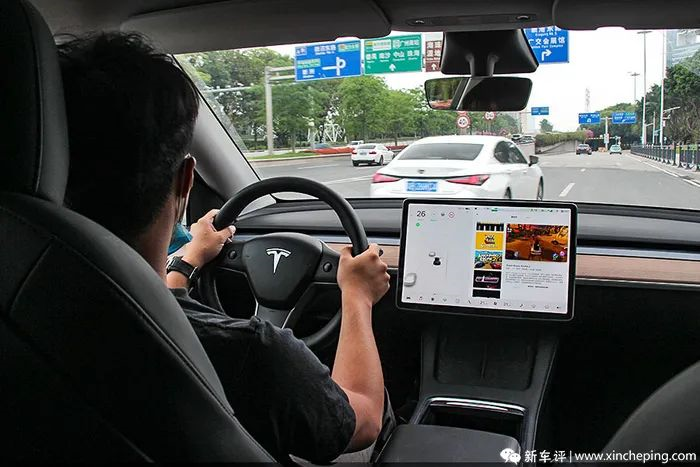
As for the feedback from the chassis, the overall adjustment is more supportive. In fact, this setting is understandable. After all, electric vehicles are heavier, and if combined with comfort shock absorbers, the body dynamics will inevitably be much worse. On the other hand, the suspension response of the Model Y is not as sharp as that of the Model 3. Specifically, when the road conditions are poor, especially on irregularly damaged roads, the stability of the body is poor, accompanied by some low-frequency resonance, which has a certain impact on ride comfort.
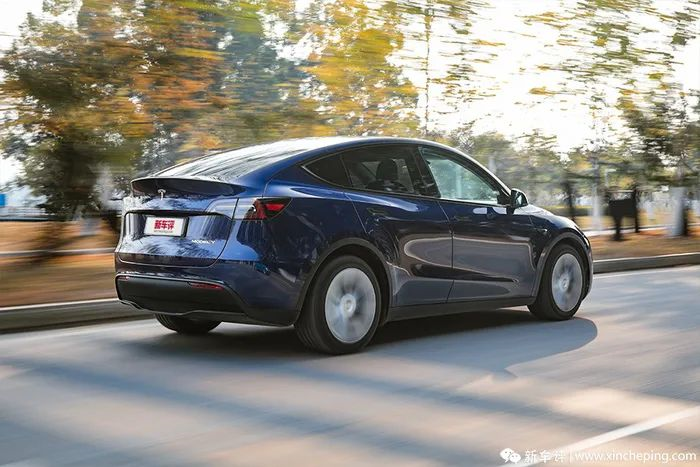 Due to the changes in body form, the driving and riding experience of Model Y has decreased compared to its brother model Model 3. So, how does it compare to SUVs of similar prices? Unfortunately, when faced with SUV models at similar prices such as NIO EC6, Volkswagen ID.4 Series, BMW iX3, etc., Model Y also has obvious disadvantages in chassis quality and noise isolation performance.
Due to the changes in body form, the driving and riding experience of Model Y has decreased compared to its brother model Model 3. So, how does it compare to SUVs of similar prices? Unfortunately, when faced with SUV models at similar prices such as NIO EC6, Volkswagen ID.4 Series, BMW iX3, etc., Model Y also has obvious disadvantages in chassis quality and noise isolation performance.
The “Standard” power mode is the strongest state for the non-performance version of Model Y. Testing Tesla’s acceleration is simple; shift into D, press down the brake pedal to activate the automatic parking brake, and then floor the accelerator pedal. When the long-range version of Model Y accelerates at full power, there is a linear increase in power, unlike the high-performance Model 3 or EC6 that instantaneously bursts and scares people. Nevertheless, even so, one should be prepared before pressing down on the accelerator pedal since torque still accelerates much faster than a fuel-powered car. It is also worth noting that even though Model Y is an SUV, with higher vehicle height, there is no obvious upward tendency during full acceleration, and the body remains stable.
After several rounds of testing, the result stabilized at around 5 seconds, which is slightly better than the official 5.1-second acceleration result for 0-100 kilometers/hour.
Tesla Model Y uses the Bosch iBooster electronic brake system, with Brembo-manufactured four-piston brake calipers on the front brakes, and custom-made Winstar EVO³ EV tires from Hankook with dimensions of 255/45 R19. The brake pedal of Model Y is relatively hard compared to many household cars, with a sports car feel. When braking at full force, perhaps due to some sand and stones on the road, the ABS system works actively in the later stage.
After several rounds of brake testing, the results were around 38-39 meters, which is average for Tesla.
Actual MileageTo test the Model Y’s range potential, we conducted a photovoltaic test. The test method is the same as the previous photovoltaic test. We fully charged the vehicle and then ran it to exhaustion. The test was carried out on the ring road of Foshan, simulating the state of high-speed long-distance driving by users. The weather was sunny, and the temperature was around 25℃ on the day of the test.
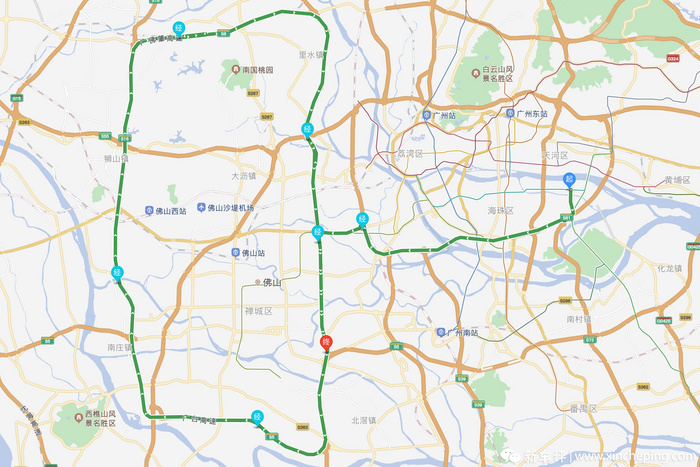
The NEDC range for the Model Y Long Range AWD is 594 km. After being fully charged, the displayed estimated range is 498 km, which will be adjusted according to current driving or power usage conditions, with a very high degree of reference.
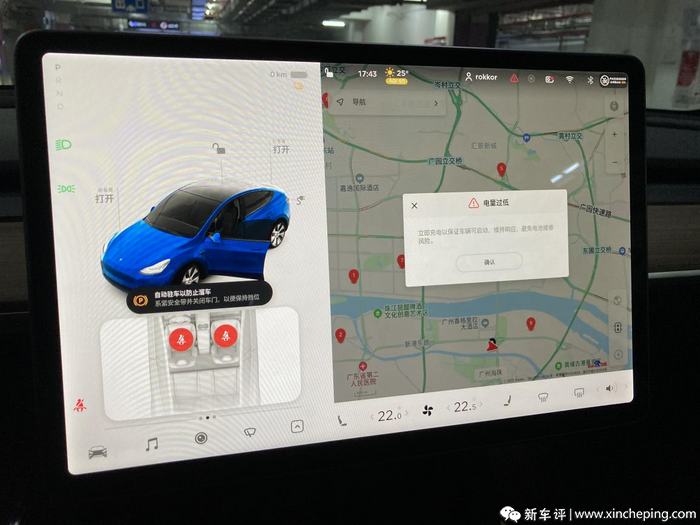
During the test, we set the air-conditioning temperature to 23℃, the driving mode to “Standard”, and the basic AP function was used throughout the journey for “Autopilot” with a speed set at 100 km/h. In the end, this Model Y Long Range AWD ran to 460.9 km before running out of power, with an average speed of 77 km/h throughout the journey. Compared to the displayed range of 498 km when we set out, the accuracy rate reached 92.4%. However, compared to the NEDC range of 594 km, the ratio is approximately 0.78. Among the Teslas we tested, this score is not ideal.
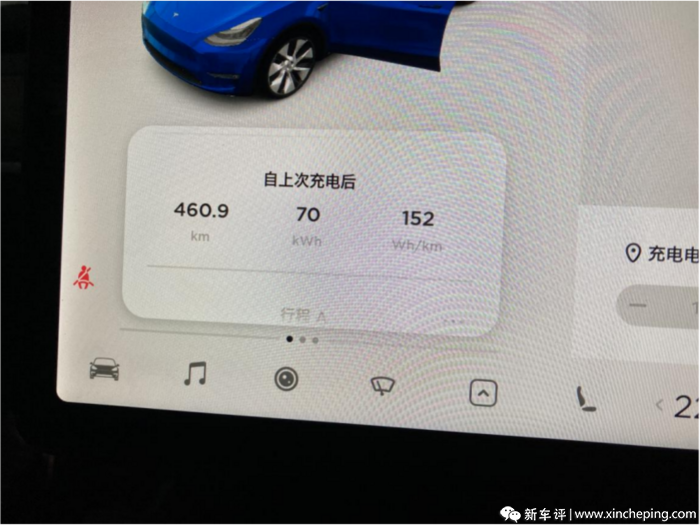
After-sales service
I would like to combine these two points because Tesla’s after-sales model is completely different from traditional automakers. All of its after-sales points are directly operated by the company, which ensures service quality is guaranteed and standardised. The disadvantage is that there are still too few stores, especially in second- and third-tier cities (of course, they are also steadily increasing).
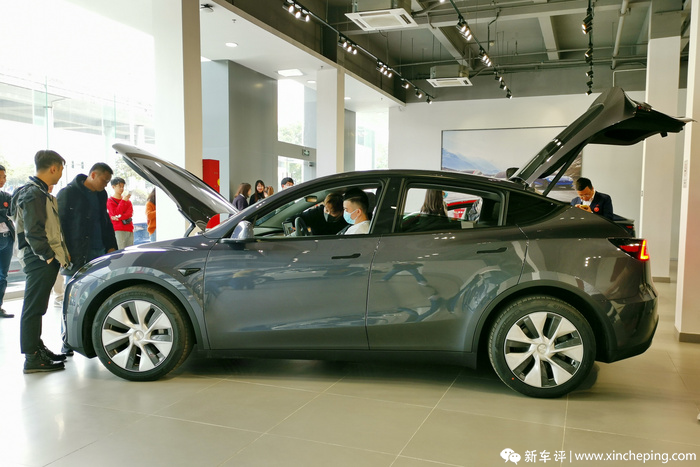
Of course, if you own a Tesla, you have the right to use Tesla’s Superchargers. The convenience of using these exclusive chargers is incomparable to public chargers from other brands. Currently, there are over 6,000 Tesla Superchargers in China. Together with over 760 open Supercharging stations and over 700 Destination Charging stations, Tesla’s charging network covers more than 300 cities in China, almost all major cities in the country. And the more efficient V3 charging stations are also gradually being upgraded.#### Translation

In terms of usage cost, if the cost of electricity per kilometer is calculated alone, it is indeed very cheap. The cost of off-peak electricity is about 0.1-0.2 yuan per kilometer. However, because the Model Y only delivers half a year of 1500 km of supercharging (recommended users will receive supercharging mileage), if you do not have a home charging pile and only use supercharging, the cost of about 2 yuan/kWh is still relatively high; And if you buy a Tesla home charging pile, the total cost of the charging pile will be around 10,000 yuan.

Tesla’s after-sales maintenance price is not cheap, in fact, we understand that it is roughly the same level as BBA. However, its advantage is that the maintenance cycle and items of electric vehicles save too much compared with fuel vehicles. Therefore, in terms of vehicle usage cost, the Model Y is still quite cheap.
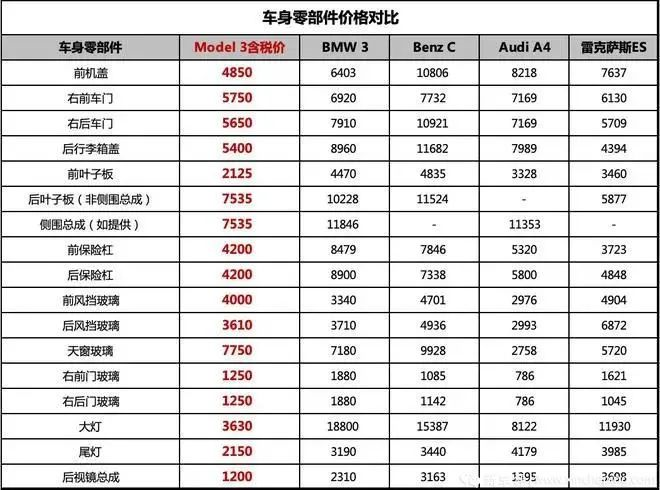
Scoring and Summary
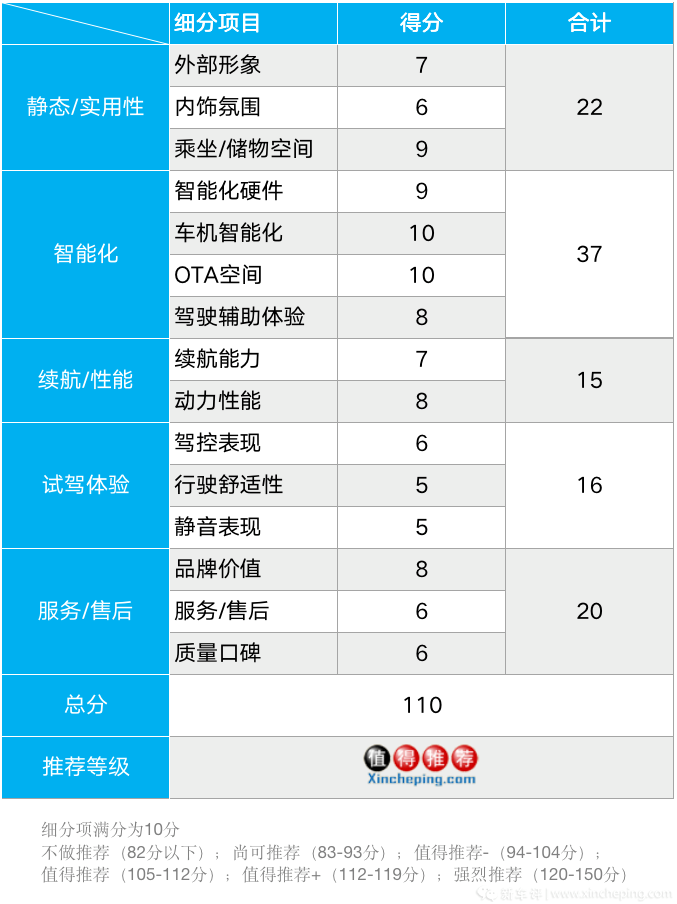
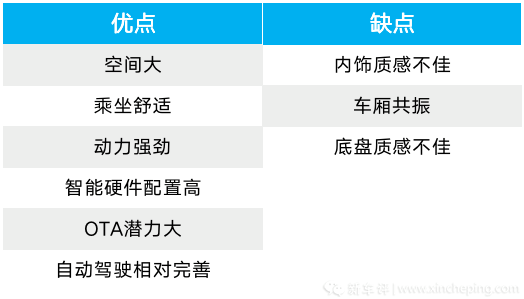
Conclusion
From the perspective of the product, the Model Y is special enough. It has a minimalist appearance and interior, excellent power output, and the establishment of intelligent hardware is quite perfect. Considering it as an intelligent product, the Model Y can obtain a high score. After all, the hardware is strong, and the later OTA space is huge, and the playability is very high. But if judged from the perspective of a car, its shortcomings such as cheap interior, noisy air outlets, cabin resonance, and slow response of the chassis will be more significant.
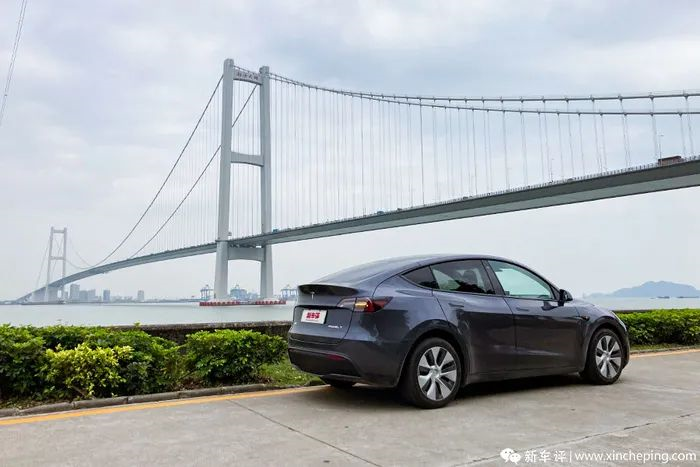
Therefore, if your understanding of “cars” is still relatively traditional and you value driving quality, Model Y may not be suitable for you. But if you like novelty, are passionate about electronic products, and are interested in intelligent electric vehicles with strong power, Tesla can certainly give you great satisfaction. And the Model Y is the choice of a larger space and more homely feel for these Tesla geeks.
This article is a translation by ChatGPT of a Chinese report from 42HOW. If you have any questions about it, please email bd@42how.com.
